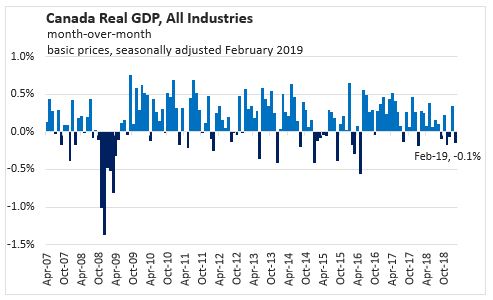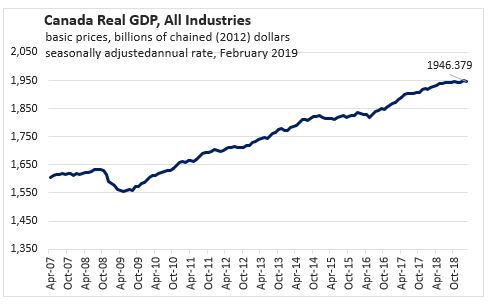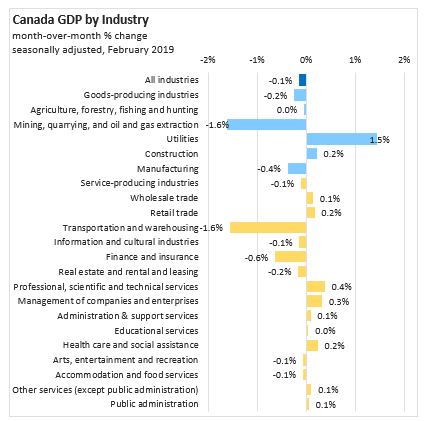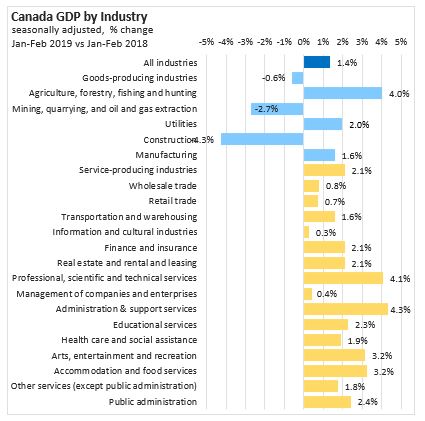The Economics and Statistics Division maintains archives of previous publications for accountability purposes, but makes no updates to keep these documents current with the latest data revisions from Statistics Canada. As a result, information in older documents may not be accurate. Please exercise caution when referring to older documents. For the latest information and historical data, please contact the individual listed to the right.
<--- Return to Archive
For additional information relating to this article, please contact:
April 30, 2019CANADA GDP BY INDUSTRY, FEBRUARY 2019 
Real GDP in Canada decreased 0.1 per cent in February following growth of 0.3 per cent the previous month. In February output was down 0.2 per cent in goods sector and service output declined 0.1 per cent. Compared to February 2018, the Canadian economy is 1.1 per cent larger with an annualized value of $1,946 billion (chained 2012 dollars).

Mining, quarrying and oil and gas extraction was down for the sixth consecutive month and in all subsectors. Lower international demand caused declines in mining with decreases in metal ore, non-metallic mineral, and coal mining. Oil and gas extraction was down with lower output of natural gas and crude oil. Following the largest growth in nearly 15 years in January, manufacturing output in durables and non-durables contracted in February. Construction activity was up (+0.2 per cent) for a second month in a row after seven months of decline, led by gains in residential construction. Utilities were up 1.5 per cent with record-setting cold temperatures in Western Canada and colder temperatures in the rest of country.
Transportation and warehousing was down 1.6 per cent in February, the largest decline since 2011. Rail transportation declined with less movement of iron ore, potash, fuel oils and crude petroleum; snowfall across the country and a train derailment in British Columbia had an adverse impact on the sector. Finance and insurance sector declined on decreases in the issuance of new securities and lower trading activity in bond and money markets. The public sector was up 0.1 per cent with raising output in all three subsectors (education, health care, and public administration).

Comparing the size of the Canadian economy in January-February 2019 with January-February 2018, there has been a 1.4 per cent increase due to higher service sector output (+2.1%) while the goods-producing sector is 0.6 per cent smaller. Lower activity in construction and mining, oil and gas has offset higher agriculture, forestry, fishing and hunting; manufacturing and utilities. Service sector output is higher across all subsectors with the largest increases in administration and support services, and professional, scientific and technical services subsectors.

Statistics Canada. Table 36-10-0434-01 Gross domestic product (GDP) at basic prices, by industry, monthly (x 1,000,000)
<--- Return to Archive